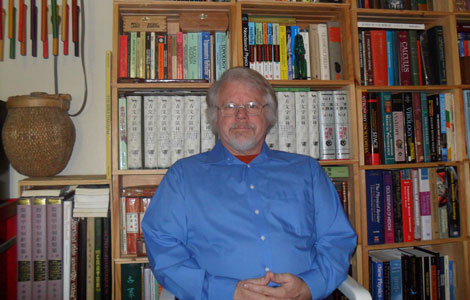Beijing Design Week's gift: making ideas a reality
Updated: 2013-10-09 07:45
By Sun Yuanqing (China Daily)
|
||||||||
Zhang Chen received five orders for the black walnut desk she created as her graduation work, an exciting moment for the young designer. However, when the five desks came out of the factory none of them looked the same as the prototype she created.
"I had to carry them to my own workshop to modify everything," says Zhang, the 24-year-old founder of furniture brand Guiju.
Like many young designers, Zhang finds it difficult to persuade veteran manufacturers to work with her. Most of her work is expensive, custom made products.
"I want to sell more at a lower price. But there is no other choice. The large manufacturers won't take orders from new designers. And because of the small quantity and the extra time and energy invested, we are not able to cut the costs," Zhang says.
Thankfully, Zhang recently found a partner who is willing to help her sort out the manufacturing and marketing so she can focus on the creative side. She was chosen as one of the designers to work with BJDW Design Gift, a project launched by Beijing Design Week and Red Star Design Fund.
Now in its second year, Beijing Design Week 2013 is trying to make design a more tangible asset for the city, shifting its focus from conceptual exhibitions to design consumption. The BJDW Design Gift is one of the projects that help gifted local designers such as Zhang to realize their ideas.

"The aim is to promote Chinese indigenous design in both local and global markets," says Zhang Xin, design director of Beijing Design Week and creative director of BJDW Design Gift.
"Every time I visit a young designer, they have a huge stack of drafts. But very few of them eventually get produced. The gap between the manufacturer and designer is huge."
BJDW Design Gift is now working with 15 designers, including established names such as Yeh Yu-hsuan and up-and-coming ones like Zhang Chen, to design under the label BJDW Design Gift.
First editions of more than 100 products are sold in the 751 art zone. They will soon be available at high-end retail stores, gift shops and bookstores around Beijing, as well as online shops, Zhang says.
The products will take part in the New York International Gift Show and the Milan Design Week next year, Zhang says.
BJDW is also collaborating with Lexon, a French design brand that has more than 5,000 stores in 85 countries around the world, to help Chinese designers reach a bigger audience.
Rene Adda, founder of Lexon, says he is looking forward to working with Chinese designers in the near future.
"We haven't got a Chinese designer at Lexon so far, and this is a new opportunity. What I want to say to young designers is that the goal is market, not museum," Adda said at the release of Lexon's 2014 collection at Beijing Design Week.
"The products in the world today are already very diversified, what we need is not more products, but products that are more attractive. So I want the designers to look at our collection this year and imagine what they can add to it."
BJDW 2013 also set up numerous venues in the city that allow independent and part-time designers to showcase and sell their work.
In Nali Patio in Beijing's Sanlitun area, young furniture and accessory designers test the waters with 3-D print jewelry and cutting-edge light fixtures.
At the Design Ideas Taiwan exhibition in the 751 art zone, the exhibits, ranging from modern ceramics brand 3,co to organic grain label Green in Hand, are available for purchase.
"The biggest problem of the previous two Beijing Design Weeks is that they didn't provide many platforms for design trading," says Yih Cheih-chung, curator of the exhibition. "The best way to support a good design is to buy and use it so that you can understand how the designer perceives life."
As Chinese manufacturing transits from "made in China" to "created in China", it also means more opportunities for designers from outside, Yih says.
"Taiwan has a lot of designers; however, the local market is very small. We have to explore the market on the Chinese mainland if we want to have sustainable development."
sunyuanqing@chinadaily.com.cn
(China Daily USA 10/09/2013 page8)

 Rare look in Shaolin temple
Rare look in Shaolin temple
 Last photos of Hungarian wingsuit diver
Last photos of Hungarian wingsuit diver
 In photos: Typhoon Fitow aftermath
In photos: Typhoon Fitow aftermath
 Japan-US military drill raises tension
Japan-US military drill raises tension
 Higgs and Englert win physics Nobel prize
Higgs and Englert win physics Nobel prize In Bali, they relax in local fashions
In Bali, they relax in local fashions
 Post office for Liaoning carrier opens
Post office for Liaoning carrier opens
 A smog-filled Beijing targets polluting cars
A smog-filled Beijing targets polluting cars
Most Viewed
Editor's Picks

|

|

|

|

|

|
Today's Top News
China predicted to be largest tourist market for US
Peace is in China's DNA: says ambassador
Xiaomi's Barra ready to take on Beijing
A day of cultural exchange at Pace University
ZTE, Houston Rockets shooting for global markets
Global firms facing HR challenges in Asia
Shops court Chinese with Mandarin
Back to 1942, entered for the 86th Oscars
US Weekly

|

|







